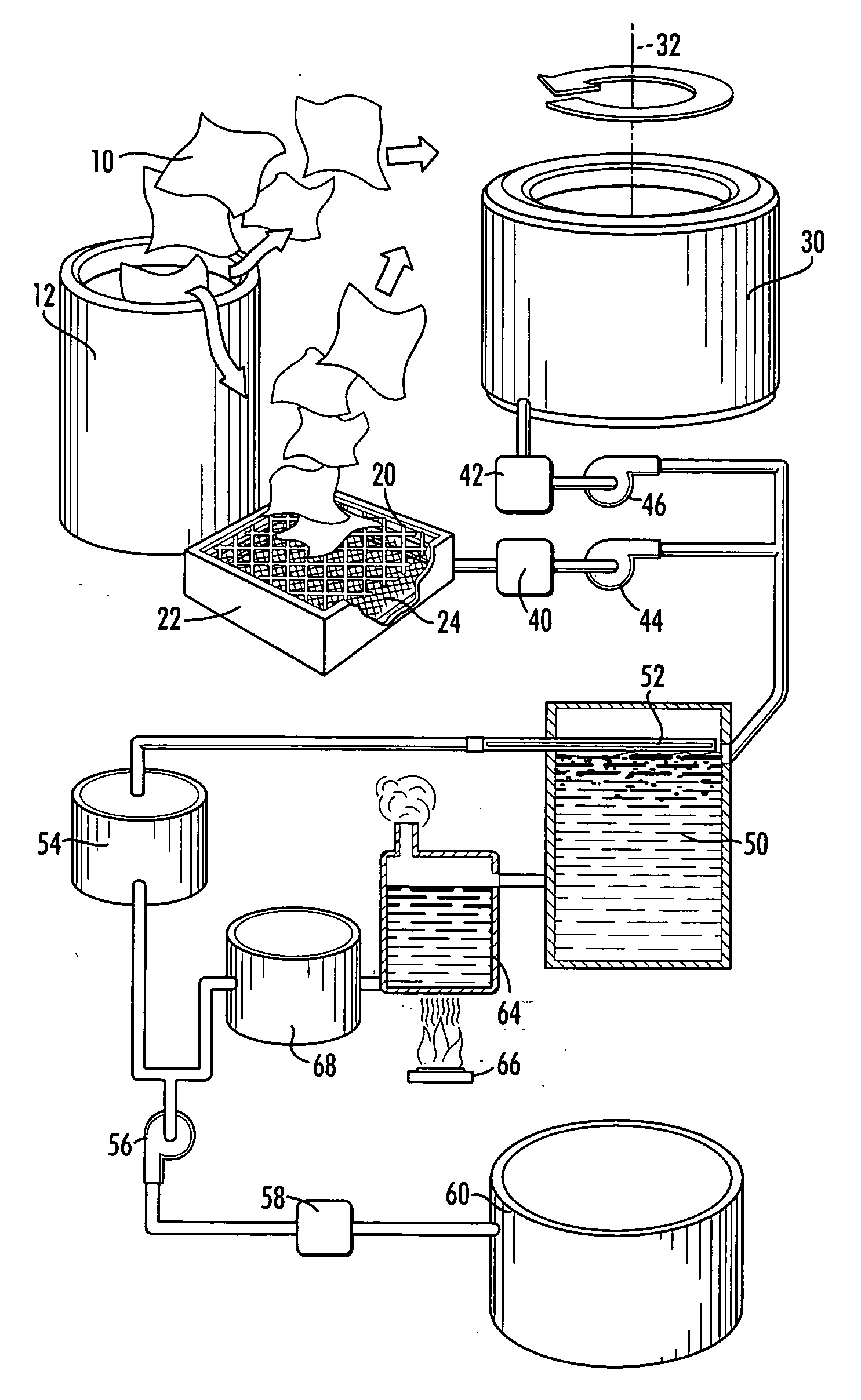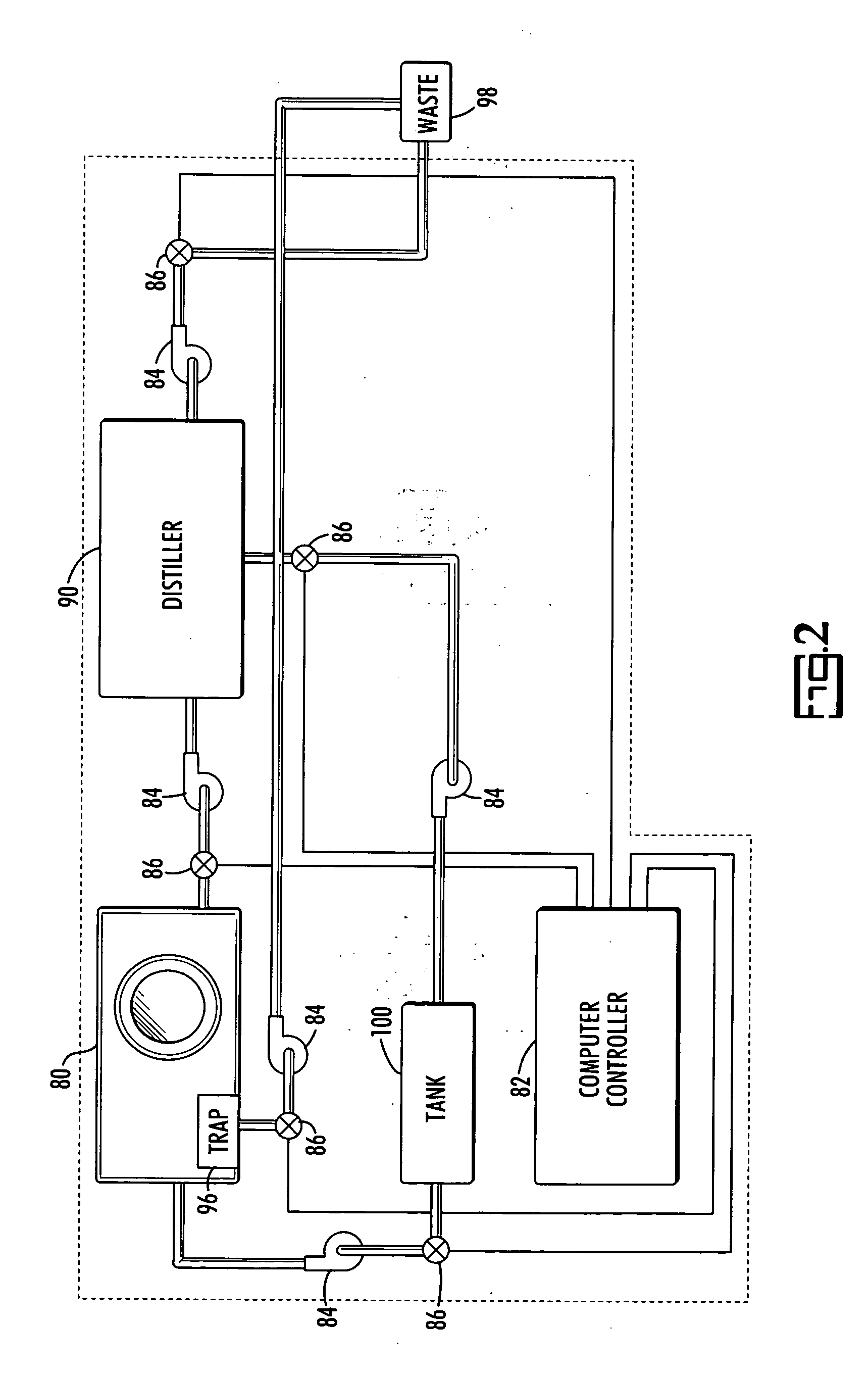Method for cleaning textile absorbers
- Summary
- Abstract
- Description
- Claims
- Application Information
AI Technical Summary
Benefits of technology
Problems solved by technology
Method used
Image
Examples
Embodiment Construction
[0024] Referring now to FIGS. 1-3 there are illustrated schematic diagrams and a flow chart of a method and apparatus for separating extraneous substances from fabrics according to the present invention. It is contemplated by the present invention that any type of fabric, be it woven, non-woven, natural, or synthetic, can be cleaned using the following method. Furthermore, it is also contemplated that any type of extraneous substance that typically attaches to or becomes absorbed by fabrics can be removed or desorbed by the following method. Although there is no end of extraneous substances and fabrics for which the present invention is applicable, by way of example, the following description will focus on industrial-type fabrics and extraneous substances affecting these fabrics.
[0025] The desorption of extraneous substances, such as oil and other industrial lubricants, from absorbent materials is a prevalent industrial process. Absorbent fabrics used in industrial settings include...
PUM
 Login to View More
Login to View More Abstract
Description
Claims
Application Information
 Login to View More
Login to View More - R&D
- Intellectual Property
- Life Sciences
- Materials
- Tech Scout
- Unparalleled Data Quality
- Higher Quality Content
- 60% Fewer Hallucinations
Browse by: Latest US Patents, China's latest patents, Technical Efficacy Thesaurus, Application Domain, Technology Topic, Popular Technical Reports.
© 2025 PatSnap. All rights reserved.Legal|Privacy policy|Modern Slavery Act Transparency Statement|Sitemap|About US| Contact US: help@patsnap.com



